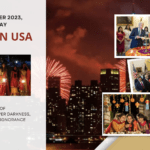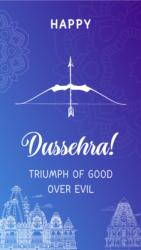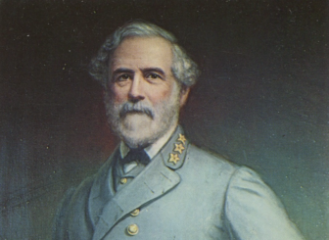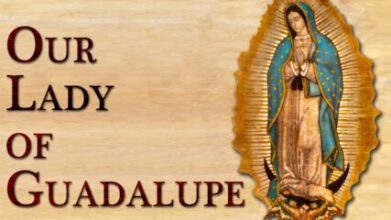Dussehra, also known as Vijayadashami, is one of the most celebrated festivals in India. Traditionally, it marks the victory of Lord Rama over the demon king Ravana, symbolizing the triumph of good over evil. In recent years, as the Indian diaspora has grown in the United States, Dussehra has found a new home in the USA, becoming an occasion to celebrate Indian culture, traditions, and the universal theme of righteousness prevailing over wickedness.
In Year 2023, Dussehra is on 23 Oct, Monday Type:Religious Observance-Hindu Holiday
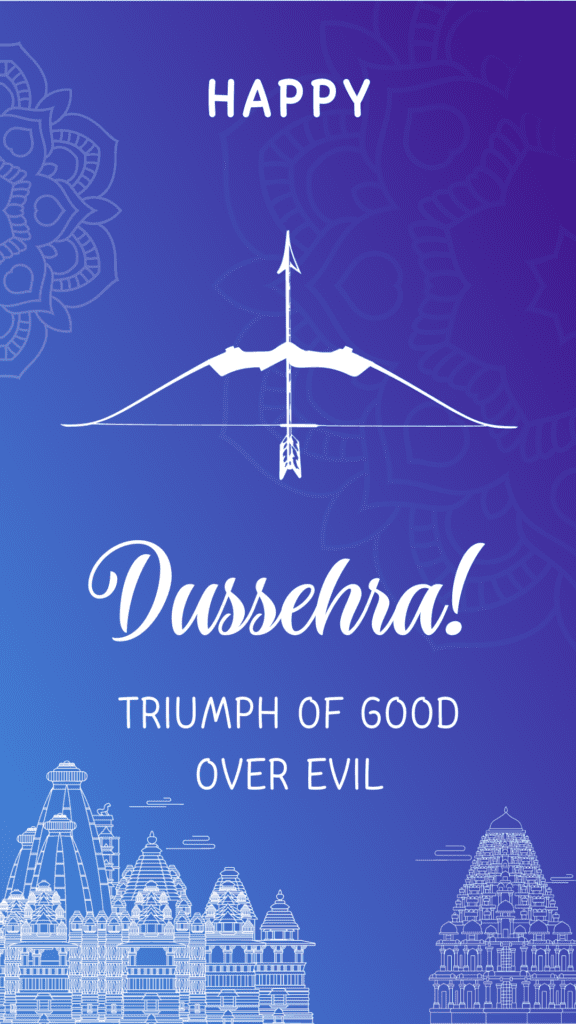
Dussehra’s Significance
Dussehra typically falls in September or October, depending on the lunar calendar. It’s celebrated on the tenth day of the Navaratri festival, which lasts for nine nights and is dedicated to the goddess Durga. The festival signifies the end of a period of prayer, reflection, and fasting, and it culminates in the grand celebration of Dussehra.
The Story of Dussehra
The central narrative of Dussehra revolves around the epic Indian mythological tale of Lord Rama. Lord Rama, an incarnation of the god Vishnu, embarks on a journey to rescue his wife Sita, who has been kidnapped by Ravana, the ten-headed demon king of Lanka. After a fierce battle, Lord Rama ultimately vanquishes Ravana, signifying the victory of good (Rama) over evil (Ravana). This victory is celebrated with great enthusiasm and is accompanied by traditional rituals, cultural performances, and symbolic effigy burnings.
Dussehra Celebrations in the USA
As the Indian diaspora in the United States has grown, so too has the celebration of Dussehra. Across the country, Indian-American communities come together to observe this significant festival, bridging the gap between their homeland and their adopted home. Here are some of the ways Dussehra is celebrated in the USA:
- Religious Observance: Many Indian-Americans visit local temples and participate in special prayers and rituals to honor Lord Rama and seek blessings for a life filled with goodness.
- Cultural Programs: Dussehra celebrations often feature cultural programs showcasing classical Indian dances, music, and theatrical performances. These events not only entertain but also educate people about Indian traditions and history.
- Ramlila Performances: In some communities, elaborate Ramlila performances are staged, where actors depict the key events of the Ramayana, the epic that narrates Lord Rama’s story.
- Food and Cuisine: Traditional Indian food plays a significant role in Dussehra celebrations. Families and communities come together to prepare and share special dishes, sweets, and snacks.
- Effigy Burning: The most iconic and widely recognized tradition of Dussehra is the burning of effigies of Ravana, his brother Kumbhakarna, and his son Meghanada. These effigy burnings symbolize the victory of good over evil and often draw large crowds.
- Community Gatherings: Dussehra is a time for Indian-Americans to come together as a community. It’s a chance to meet friends, neighbors, and fellow community members, reinforcing the bonds of culture and heritage.
The Universality of Dussehra
Dussehra carries a universal message that transcends cultural and geographical boundaries: the triumph of good over evil. It is a reminder that righteousness and moral integrity should be upheld, no matter where one resides. In the USA, Dussehra has become a symbol of unity, bridging the gap between Indian-Americans and their fellow citizens, as they come together to celebrate the shared values of goodness and justice.
In conclusion, Dussehra’s celebration in the United States is not only a testament to the vibrant cultural diversity in the country but also a reflection of the global appeal of its themes. It is a celebration of Indian culture, but more importantly, it is a celebration of the enduring human belief in the victory of good over evil, a belief that transcends borders and brings people together in joyous festivities.
